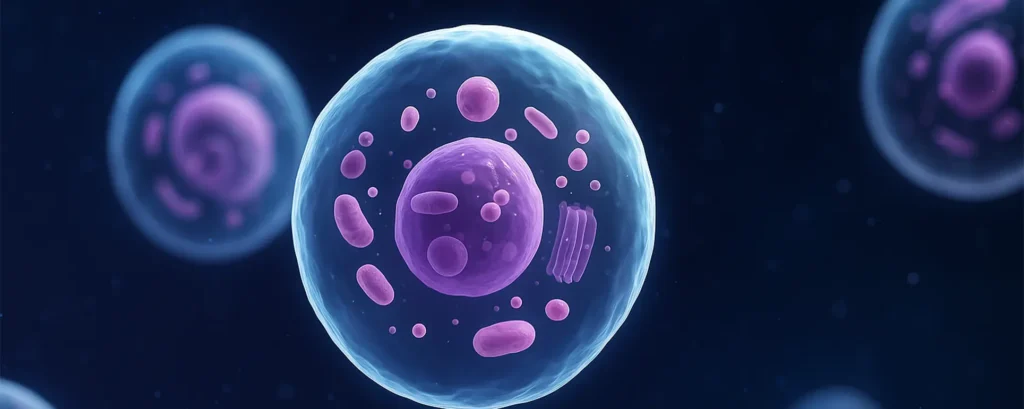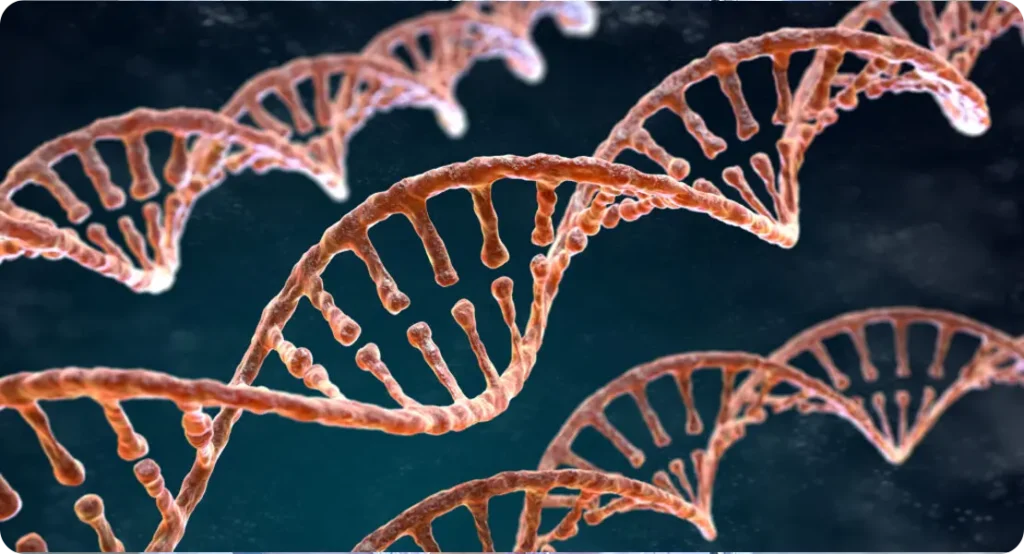Vitiligo is more than just a skin condition it’s a journey that affects both appearance and confidence. It causes certain areas of the skin to lose their pigment, creating pale or white patches that can appear anywhere on the body. While many people think of it as a cosmetic issue, there’s actually a lot more going on beneath the surface. What makes vitiligo so fascinating and frustrating is that it’s tied to a complex mix of factors, from our genes to the immune system, and even environmental triggers. Roughly 1 to 2% of people around the world live with this condition, which can begin at any stage of life and often progresses in unpredictable ways.
By 2025, researchers have made major breakthroughs in uncovering how vitiligo works. We now know that the immune system plays a leading role by mistakenly attacking melanocytes the cells that give our skin, hair, and eyes their colour. But what sets this process in motion? How do genetics, stress, and inflammation factor into it?
In this article, we’ll break down the science behind vitiligo in a way that’s easy to understand. From autoimmune responses and genetic links to oxidative stress and signalling pathways we’ll explore how everything connects, and how this growing knowledge is helping doctors develop better, more targeted treatments. Living with vitiligo isn’t just about managing skin changes it often comes with emotional and social challenges too. Many people feel self-conscious or misunderstood, especially when the condition appears suddenly or spreads quickly. That’s why awareness, empathy, and ongoing research are so important. The more we understand the science, the better we can support those living with vitiligo not just medically, but emotionally as well.
What’s truly encouraging is the shift in how vitiligo is being viewed not just by doctors, but by society too. Thanks to public figures who openly share their journeys, the condition is slowly losing its stigma. At the same time, the medical community is moving beyond just covering up the patches and is now focused on finding real, lasting treatments. It’s a powerful reminder that science and awareness can go hand in hand to make a real difference.
Autoimmune Targeting of Melanocytes
Vitiligo is now widely understood as an autoimmune condition, where the body’s own immune system mistakenly targets melanocytes the cells responsible for skin pigment. Scientists have found cytotoxic CD8+ T cells in areas of depigmented skin, which suggests a strong and specific immune response aimed at these pigment-producing cells. These T cells release inflammatory cytokines like interferon-gamma, triggering a chain reaction that ultimately destroys melanocytes. It’s almost as if the immune system is treating these normal cells as intruders.
Once this immune response is set into motion, the body forms memory T cells that “remember” the attack. These memory cells stay alert and can strike again if melanocytes regenerate, which explains why vitiligo often comes back even after successful treatment. This lingering immune memory makes the condition especially tricky to manage long-term. In many cases, just calming the symptoms isn’t enough long-term control is key.
That’s why a major area of research today is focused on figuring out how to stop this immune misfire at the root. Scientists are exploring ways to dial down T cell activity or block the release of inflammatory cytokines, aiming to prevent further damage. These approaches hold promise for treatments that don’t just cover up the symptoms, but actually change the way the disease behaves. The hope is to create therapies that offer lasting relief, not just temporary results.
Genetic Susceptibility and Hereditary Links
While vitiligo isn’t passed down in a simple inherited pattern, it often runs in families pointing to a strong genetic influence. Researchers have identified over 50 genes that may play a role in increasing vitiligo risk, especially those involved in immune system regulation and melanocyte health. Key genes like NLRP1, TYR, and PTPN22 frequently show up in genetic studies of vitiligo patients.
Here’s what the research shows:
- People may be born with a higher baseline risk due to variations in specific genes.
- Identical twins have a higher chance of both developing vitiligo than fraternal twins.
- Having these genes doesn’t guarantee vitiligo it requires additional environmental or immune triggers like stress, infections, or skin injuries.
Why this matters for treatment:
By identifying genetic risk markers, scientists can now better understand who is more vulnerable to developing vitiligo. This paves the way for personalised treatments that target specific genes or immune responses. In the future, this approach could improve diagnosis, treatment, and even prevention of vitiligo.
The Role of Oxidative Stress
Oxidative stress is now seen as one of the earliest contributors to vitiligo, possibly setting the stage before the immune system even gets involved. It happens when there’s an imbalance between reactive oxygen species (ROS) which can damage cells and the body’s natural antioxidants meant to neutralise them. Since melanocytes are highly active and produce melanin, they generate more ROS and are especially sensitive to this kind of stress. When their protective systems are overwhelmed, they become vulnerable.
Studies have found that in vitiligo-affected skin, levels of hydrogen peroxide are unusually high, while catalase, an enzyme that helps break it down, is often deficient. This imbalance can harm melanocytes directly and may also release distress signals that catch the attention of the immune system. In other words, oxidative stress might be the silent trigger that sets off the autoimmune attack. It’s like the first domino in a much bigger chain reaction.
Because of this, researchers are now exploring antioxidant therapies as a way to slow down or possibly reverse early vitiligo changes. These include both topical creams and oral supplements designed to boost the skin’s natural defences. While not a cure, such treatments could work well alongside immune-based therapies creating a more holistic approach to managing the condition.
Inflammatory Pathways and Cytokine Storms
Inflammation lies at the heart of many autoimmune conditions and vitiligo is no different. Inflammatory messengers, or cytokines, like interleukin-2 (IL-2), tumour necrosis factor-alpha (TNF-α), and interferon-gamma are heavily involved in creating a hostile environment in the skin. These molecules act like distress signals, calling immune cells to the site where melanocytes are under attack. Once there, these cells intensify the damage, continuing the cycle.
Here’s how inflammation affects vitiligo:
- Cytokines like IL-2, TNF-α, and interferon-gamma act as immune alarms that worsen skin damage.
- The immune system remains in an overactive state, preventing healing or repigmentation.
- Inflammation may stay limited to a few patches or spread more widely depending on disease progression.
Emerging treatments offer new hope:
Targeting these inflammatory pathways is now a major focus in vitiligo treatment. Drugs like JAK inhibitors are showing promise for blocking specific cytokine signals and calming the immune response. If successful, these therapies could provide more effective, targeted relief for people living with vitiligo.
Cellular Stress and Danger Signals
When melanocytes are damaged or under stress, they don’t stay silent they send out molecular distress signals known as danger-associated molecular patterns (DAMPs). These molecules are the body’s way of saying, “something’s wrong,” and they alert the immune system to take action. In people with vitiligo, DAMPs like heat shock proteins can unintentionally intensify the immune response, making things worse. Instead of helping, the immune system begins to attack the very cells it’s meant to protect.
Interestingly, it’s not just melanocytes reacting keratinocytes, the neighbouring skin cells, also play a role. Under stress, they release chemokines, which are chemical messengers that draw more immune cells to the area. This creates a harmful environment around the melanocytes, making it even harder for them to survive. Over time, this process may cause white patches to grow and spread further across the skin.
Researchers are now exploring ways to stop this chain reaction before it starts. By blocking the release or effect of these danger signals, scientists hope to create a more protective environment for melanocytes. This area of study is still developing, but it holds promise for not just treating vitiligo but possibly preventing its progression from the very beginning.

The Interferon-Gamma Pathway
One of the major players in the vitiligo immune response is interferon-gamma (IFN-γ) a powerful, pro-inflammatory cytokine that’s found in high levels within affected skin. IFN-γ acts like a commander in the immune system, activating surrounding keratinocytes and dendritic cells. Once activated, these cells release chemokines, which work like signals to summon more immune cells to the scene. It’s a well-coordinated, but unfortunately damaging, chain of events.
A key part of this response is something called the CXCL10-CXCR3 axis a specific immune pathway that keeps the attack going. Once activated by IFN-γ, it creates a loop that encourages continued melanocyte destruction and contributes to the spread of white patches. This feedback mechanism is one reason why vitiligo doesn’t just stop on its own it feeds on itself unless interrupted. Because of this, the IFN-γ pathway has become a major focus for researchers looking for new treatment strategies.
By blocking IFN-γ or the downstream CXCL10-CXCR3 signals, scientists hope to break the autoimmune cycle and give melanocytes a chance to recover. Treatments like JAK inhibitors, which can interrupt these inflammatory signals, are already showing promise in early trials. Targeting this pathway could be a game-changer in helping restore pigmentation and stopping vitiligo from spreading.
Apoptosis and Melanocyte Death
Let’s talk about another important piece of the puzzle apoptosis, which basically means programmed cell death. It’s a natural process where cells decide to shut themselves down, often to protect the body from damage. In the case of vitiligo, when melanocytes are under oxidative or immune stress, they may choose to self-destruct as a defensive move. This whole mechanism is normally kept in check by certain proteins like p53 and BAX, which act like built-in safety regulators.
But here’s the problem in vitiligo, melanocytes seem to overreact. They become hypersensitive to even mild stress signals and end up going into apoptosis way too early. This early and unnecessary cell death speeds up the loss of pigmentation. Even worse, when melanocytes die like this, they may release parts of themselves that the immune system sees as foreign, kicking off an even stronger attack.
If we can learn how to control or slow down this process, we might be able to save more melanocytes from dying off too soon. Researchers are now working on drugs that could help melanocytes become more resistant to stress, so they don’t self-destruct so easily. This could be a big step toward keeping pigmentation stable and giving treatments a better shot at working long term.
Role of Innate Immunity
While we usually hear about the adaptive immune system when talking about vitiligo, the innate immune system actually plays a big role too especially in the early stages. Think of cells like natural killer (NK) cells and dendritic cells as the body’s first responders. They’re the ones who pick up on signs of stress or damage in melanocytes and raise the first alarm. Once they detect something unusual like altered proteins or stress markers they alert the adaptive immune system to step in.
Here’s how the innate immune system contributes to vitiligo:
- Natural killer (NK) cells and dendritic cells detect stress signals in melanocytes and trigger early immune alerts.
- Toll-like receptors (TLRs) on these cells often become overactive in vitiligo, leading to an exaggerated immune response.
- This heightened activity can cause long-term immune memory, making the condition persistent and harder to treat.
Ongoing research offers hope:
Scientists are studying ways to calm these innate immune signals especially by targeting specific TLR pathways. Though still in early stages, this research is showing promise. If successful, it could help stop vitiligo from progressing by interrupting the cycle before it fully takes hold.
Environmental Triggers and Koebner Phenomenon
Physical trauma, sunburn, or even regular skin friction can trigger vitiligo in some people a reaction known as the Koebner phenomenon. These events lead to local inflammation, making the affected area more vulnerable to immune attacks. Many people with vitiligo notice that new patches often show up right after such injuries.
Environmental stressors don’t just cause local flare-ups they can also trigger a broader immune response. This may explain why depigmentation sometimes spreads beyond the original site. The skin’s natural barrier and how it reacts to damage are key parts of this process.
To prevent flare-ups, it helps to avoid skin trauma, use proper sun protection, and steer clear of harsh chemicals. Dermatologists now include this advice as a regular part of vitiligo care.
The Role of Microbiome and Skin Flora

Emerging research indicates that the skin microbiome may influence autoimmune skin conditions, including vitiligo. Disruptions in the balance of beneficial and harmful bacteria could affect immune tolerance. Specific microbial signatures have been observed in vitiligo lesions.
An altered microbiome can influence the local immune response and may either protect or exacerbate melanocyte damage. This link is still being explored, but it presents a new layer of complexity in vitiligo pathophysiology. Gut-skin axis interactions may also play a role.
Restoring microbiome balance through probiotics or targeted treatments could offer supportive benefits in managing vitiligo. Ongoing studies aim to confirm the impact of microbiota on disease onset and progression.
Epigenetic Modifications and Gene Expression
Epigenetic changes affect how genes work without changing the actual DNA sequence. In vitiligo, these changes can influence genes involved in the immune response and the survival of melanocytes. Things like stress or environmental factors may affect these epigenetic marks.
Both DNA methylation and histone modifications have been found in the skin affected by vitiligo. These changes might cause melanocytes to stop working properly or make the immune system more likely to attack them. Unlike genetic mutations, epigenetic changes can potentially be reversed.
This opens up new treatment possibilities. Scientists are looking into drugs that can adjust gene expression to help stop or even reverse the loss of pigment in people with vitiligo.
Role of Regulatory T Cells in Immune Tolerance

Regulatory T cells (Tregs) play a key role in keeping the immune system tolerant and stopping autoimmunity. In vitiligo, research shows fewer or less effective Tregs in the affected skin. This loss of control lets autoreactive T cells attack melanocytes without restraint.
Normally, Tregs calm inflammation and regulate how strong the immune response gets. When they don’t work properly in vitiligo, it leads to ongoing inflammation and the condition persisting. Enhancing Treg function could help restore this immune balance.
Currently, treatments aiming to increase or improve Tregs are being studied. These include low-dose interleukin-2 and other immune modulators that encourage tolerance without weakening the body’s defences.
Final Thoughts: Advancing Understanding to Improve Outcomes
The science behind vitiligo has evolved significantly, revealing a complex network of immune signals, genetic factors, environmental triggers, and cellular stress responses. As researchers continue to uncover the root mechanisms behind melanocyte destruction, more personalised and effective treatments are becoming available.
This deeper understanding allows for better diagnosis, risk prediction, and long-term disease management. From JAK inhibitors to therapies targeting stress responses, a multi-targeted approach offers hope for improved quality of life and sustained repigmentation.
If you’re seeking expert guidance, our vitiligo clinic in London offers consultations with experienced dermatologists. We’ll help you explore the most effective treatment options tailored to your needs, backed by the latest research and advancements in vitiligo therapy.
References:
- Harris, J.E., 2013. Vitiligo and autoimmunity: mechanistic insights beyond the immune network. Nature Reviews Immunology, 13(11), pp.607–618. Available at: https://www.nature.com/articles/nri3523 [Accessed 2 June 2025].
- Ezzedine, K., Eleftheriadou, V., Whitton, M. and van Geel, N., 2015. Vitiligo. The Lancet, 386(9988), pp.74–84. Available at: https://www.thelancet.com/journals/lancet/article/PIIS0140-6736(14)60763-7/fulltext [Accessed 2 June 2025].
- Rashighi, M. and Harris, J.E., 2017. Interfering with the IFN: JAK inhibitors and vitiligo. Journal of Investigative Dermatology, 137(4), pp.785–787.
- Picardo, M., Dell’Anna, M.L., Ezzedine, K., Hamzavi, I., Harris, J.E. and Parsad, D., 2015. Vitiligo clinical practice guidelines of the European Dermatology Forum. Journal of the European Academy of Dermatology and Venereology, 29(5), pp.729–742. Available at: https://onlinelibrary.wiley.com/doi/10.1111/jdv.13161 [Accessed 2 June 2025].
- Bickers, D.R., Athar, M. and Voorhees, J.J., 2021. Oxidative stress in vitiligo: Pathogenesis and treatment. Pigment Cell & Melanoma Research, 34(2), pp.204–214. doi:10.1111/pcmr.12962.
